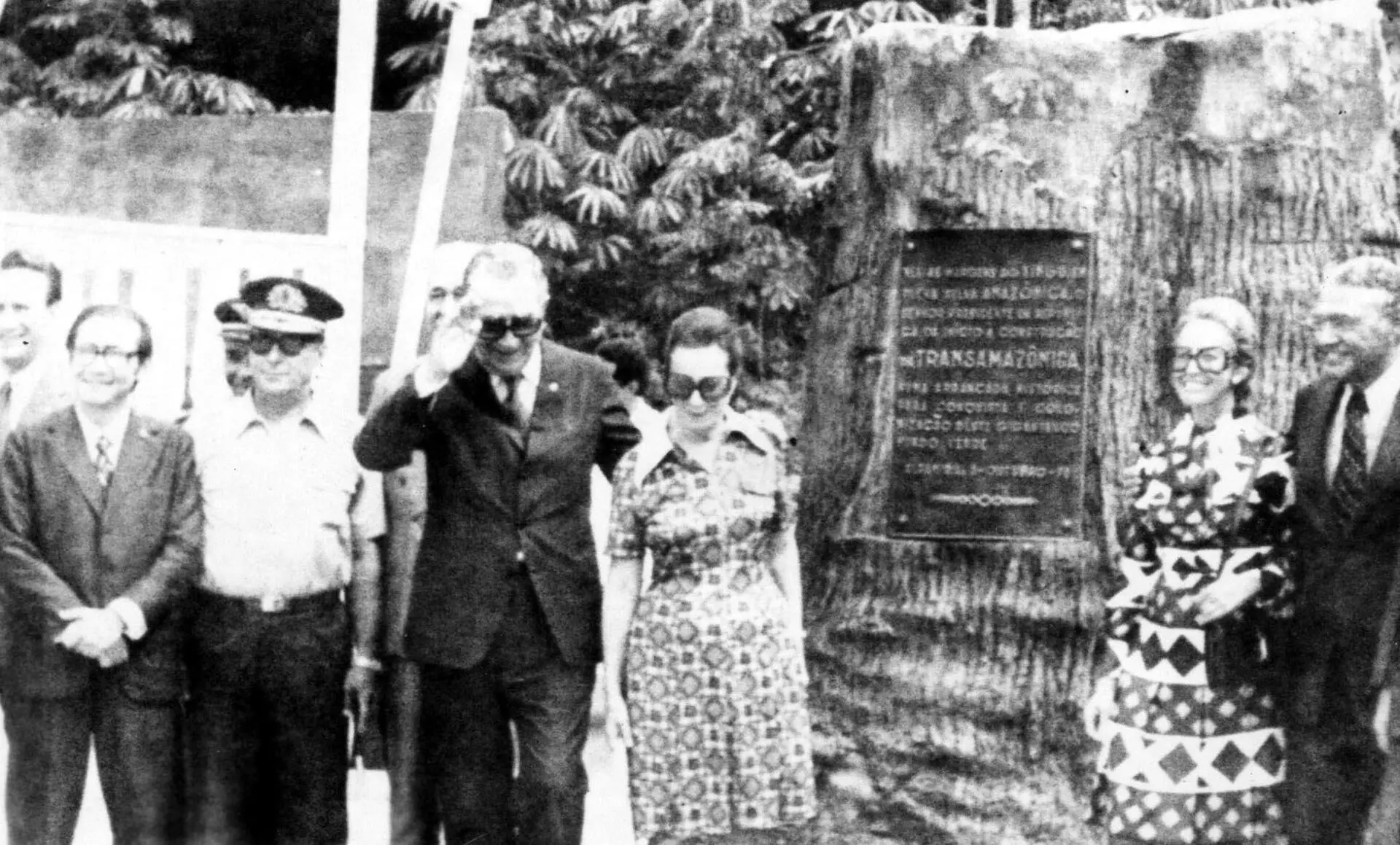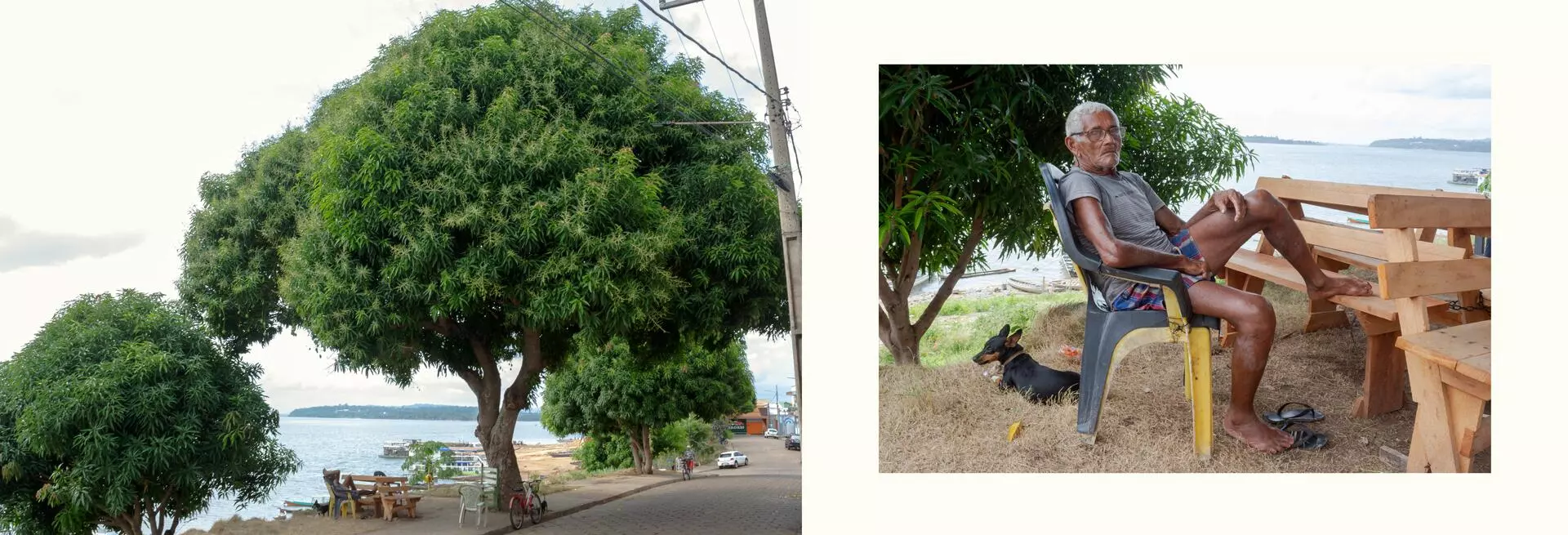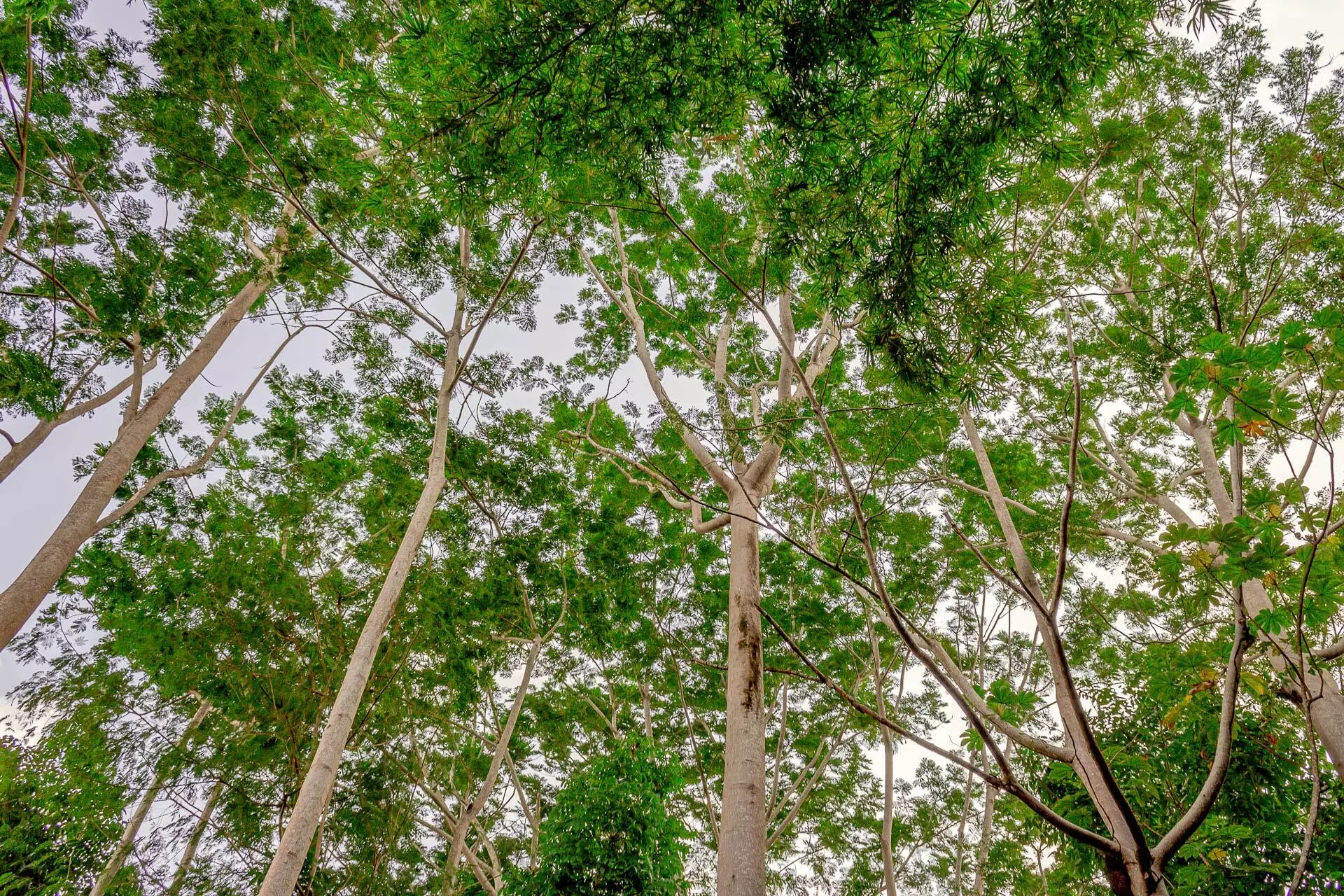On a Sunday morning in November, university professor Rodolfo Salm noticed puncture marks on the trees he had planted eleven years ago near his home, in Altamira, in the state of Pará. Twelve native Amazonian trees, including Brazilian firetrees, big-leaf mahogany trees and caneleiro trees, had been attacked. The holes were symmetric, a few centimeters from the roots, likely made by a hand auger. Under a colleague’s guidance, Rodolfo examined each hole. He saw that they were made recently and he had no doubt: the next step would be to apply poison.
The small tree stand planted by Rodolfo has around thirty trees and covers 500 square meters on a corner of an upper middle class neighborhood with a view of the Xingu River. It was left over after four landowners subdivided the area. Officially, it belongs to these people, who built their homes in the neighborhood. Rodolfo, a professor of Biology at the Federal University of Pará (UFPA) who is known in the city as an environmentalist, planted the trees with the neighbors’ consent. “I did this with education in mind, with the goal of showing that the Amazon Forest can be recovered in a few years,” he said. Whether or not it’s a coincidence, only the largest trees, some over 50 centimeters in diameter, were attacked.

Attack: biologist Rodolfo Salm noticed symmetrical punctures in twelve trees in the wooded area he planted near his house. They had been poisoned. Photos: Soll/SUMAÚMA
Trees that die suddenly from suspected poisoning are not exactly a rare occurrence in the city of Altamira. In mid-August, the trunks were chipped on half a dozen mango trees that had recently been planted by the municipal government in a protected environmental area and they then started to grow dry. This was in the central region, in an area where property has the potential to appreciate. Yet because these tree deaths almost never lead to an investigation, it’s hard to know what actually happened. Today, next to where the trees’ remains lie, there are some billboards and a fence.
Last June 5, on World Environment Day, Altamira’s municipal government coordinated a tree-planting initiative with students from a resettlement area that was built to relocate families driven from their homes by the construction of the Belo Monte Dam. The students planted 58 yellow, white, and pink ipê saplings along an avenue. Shortly afterward, municipal technical staff noticed that some of the saplings – duly marked with little white fences – had also suddenly died.
“I don’t understand, truly. I don’t know if they want to kill the grass, [or] something else in the bed and they ended up affecting some saplings,” said the municipal secretary of Environmental Management, Antônio Ubirajara Junior. Although no analysis has been done to identify substances, technical personnel at the secretary’s office believe that, based their appearance, the plants were poisoned: “They turned brown, they started drying up, as if they were dead, with that dry leaf. Then our people found that agrochemicals were probably used,” the secretary said.
Few trees on Cumaru Street
The resettlement where the ipê saplings were killed bears the Portuguese name of the Indian almond tree: Jatobá. Its streets are named Aroeira, Jarana, Andiroba and Castanheira – all Portuguese names for trees. This naming standard is the creation of Norte Energia, the Belo Monte Dam’s concessionaire, which had to build six resettlements in the city of Altamira to relocate those affected by the dam’s formation of a reservoir.
Retiree Maria Eduarda Alvarez was moved to one of these houses, right in front of the school. While she sweeps the sidewalk, she shows the machete marks on an ipê in front of her house, on Cumaru Street. A neighbor wants to cut it down to “clean” the garden bed, but she didn’t allow it. “I don’t know what’s going on here in Altamira that they’re so bothered by a tree,” says Maria. “Few homes have trees out in front. Sometimes, it’s the same resident who has them cut down.”

Urban desert: in Altamira, trees planted fail to flourish, because the saplings are poisoned and green areas are the targets of vandalism. Photo: Soll/SUMAÚMA
This view is shared by agroecologist Elnatan Ferreira Feio, an employee with the Office of the Municipal Secretary of Environmental Management (SEMMA). Elnatan coordinates a survey of every tree in the city, a sort of “census” that should end in April of next year. When he is in the field, there are some who approach him to express their disapproval of his work: “Sometimes someone comes up and says: ‘ah, this tree is no good for anything, it just makes a mess, it just drops leaves.’ Most of the time, people see the tree as something that will only make a mess.”
Growth in concrete
After the Belo Monte Dam’s construction, the city of Altamira grew rapidly. From a population of around 100,000 inhabitants prior to the project, in just a few years, a municipal government estimate showed that it had reached nearly 150,000 residents. In addition to the resettlements, another six private subdivisions emerged, with a total of over 28,000 land parcels, with the goal of seizing on the economic effervescence produced by the dam’s construction. In addition to migration, the removal of families from swampy areas in the central region also contributed to occupation of the city’s outskirts. With growth in the city’s urban limits, pavement, cement and concrete took over what used to be woods.
This fast growth caused Altamira to become an “urban desert,” in Elnatan’s words. When he was studying for his Master’s in Biodiversity and Conservation at UFPA, he wrote a paper, along with professors Gabriel Veloso and Raírys Herrera, on the city’s tree rates. The study found a Vegetation Cover Percentage of 0.49% for Altamira, while the United Nations recommends that this number be at least 30%. The survey also measures the ratio between tree canopy areas and the number of inhabitants, reaching a proportion of 1.72 square meters of tree canopy per inhabitant, a number well below the recommendation of the Brazilian Urban Arbor Society, which is 15 square meters of tree canopy per inhabitant.
Elnatan stresses that, in Altamira, the older areas in the central region are the ones with the most trees. But these aged trees, decades old, are increasingly seen as a threat to urban infrastructure.
In August of this year, a giant Sumaúma (kapok) tree, next to the bus terminal, was cut down by the municipal government. A project to expand the bus station was fighting for space with the tree. “I was in a dilemma as secretary, it was very hard to authorize this,” said Ubiratan Junior. “We always look for what’s possible, we do all of the studies, but the root removal meant that there was a very high likelihood of it falling on top of the terminal,” he justified.
For Antônia Melo, a historic activist in the Xingu region, there is a process of “persecution” against Altamira’s trees. She has personally witnessed several cases in the city’s center. One day, a huge fruit-bearing rose apple tree was cut down because a merchant wanted to provide visibility for his storefront. Another day, Antônia caught a man cutting down two trees without municipal authorization, because they were “dirtying” a resident’s house. They were caneleiro trees, an Amazonian species widely used as urban tree, since they grow relatively quickly, provide decent shade, and have deep roots that do not significantly affect pavement.
Antônia used to report these incidents to the municipal government and the Public Prosecutor’s Office, but she isn’t always convinced by the justifications provided. Authorization from the municipal government is needed to cut down trees in public spaces. Without it, those in violation can be fined; but to do this, they must be reported or caught in the act, which does not happen very often.
If plants that took decades to grow are sacrificed without much thought, Altamira must begin to reconsider how important they are when the climate emergency is already a reality. A study by UFPA researchers Márcia Hamada and Francivaldo Mendes shows how trees affect Altamira’s micro-climate. They compared Independência Square, which has the most trees and is located in the city’s central region, to Mirante Square, in the Brasília neighborhood, closer to the outskirts and with less tree cover, just over two kilometers away. The square with more trees had an average temperature of 33.3 degrees Celsius, while the other square’s temperature was 37.2 degrees Celsius, a difference of nearly 4 degrees (measurements were taken every day over one week).
A city with its back to the river
Belo Monte caused a huge change in Altamira, but it wasn’t the first and maybe not even the most profound change. The city, founded in the early twentieth century as a typical riverside location, was reborn in the 1970s, transforming into a frontier town with the construction of the Trans-Amazonian Highway, a project that was a top priority for the military dictatorship. With the road’s opening and the arrival of the thousands of migrants who settled along its riverbanks, Altamira’s population tripled, going from 15,345 to 46,509 in just ten years. Symbolizing the city’s new relationship with the forest, the highway’s imprint spelled death for an enormous Brazil nut tree, felled in 1970, at the start of construction. Two years later, the tree would be given the popular nickname of the “president’s stick,” because of dictator Emílio Garrastazu Médici’s presence at the Trans-Amazonian’s inauguration.
But Altamira’s relationship with the trees’ destruction is far from being merely symbolic, and even today the municipality is high on the list of the country’s most deforested.

The business-military dictatorship: inauguration of the Trans-Amazonian Highway, under the Médici administration, held in a clearing where there used to be an enormous Brazil nut tree. Photo: Folhapress
There is a culture of deforestation that influences the population’s relationship with trees in the urban environment, ponders Antônia Melo, whose family migrated from Piauí to the Altamira region: “The authorities at the time told my father that whoever cuts down the most forest would be a great worker, someone who was here to develop the Amazon and the country. So this education of destroying the forest, the trees, seeped into the population’s minds, especially those who came with the aim of devastating vast hectares of land to make pasture,” she says.

Friendly in the shade: Altamira residents, like Enéias de Freitas, gather under a 40-year-old mango tree to escape the heat. Photos: Soll/SUMAÚMA
It’s not easy to kill a forest
This isn’t the first time that university professor Rodolfo Salm suspects the trees he planted were poisoned. Last year, in front of his house, a river tamarind tree and two Indian almond trees dried up out of nowhere. Around this same time, a fruit-bearing rose apple tree also suddenly died in his yard.
Luckily, the trees in the stand were not poisoned this time. Improvising a bit, Rodolfo covered the holes with epoxy, he put caution tape around the area and, to prevent any possible new attacks, he groomed the lawn and put up nocturnal reflectors.
While he was working, Rodolfo noticed a tree he hadn’t planted that had sprung up: a kapok tree, still pretty fragile, but already taller than an adult human. The seed from which it sprouted had arrived there on the wind. A kapok, born all alone and that resists, in a city where, as Antônia Melo says, the trees are persecuted.
Fact-checker: Plínio Lopes
Proofreader (Portuguese): Valquíria Della Pozza
Spanish translation: Julieta Sueldo Boedo
English translation: Sarah J. Johnson
Photo Editor: Lela Beltrão
Layout and finishing: Érica Saboya
Editors: Malu Delgado (news and content), Viviane Zandonadi (editorial workflow and copy editing), and Talita Bedinelli (coordination)
Director: Eliane Brum

Resistance: a culture of deforestation sacrifices trees, but there are niches of hope, like the forest in the Alberto Soares neighborhood. Photo: Soll/SUMAÚMA





